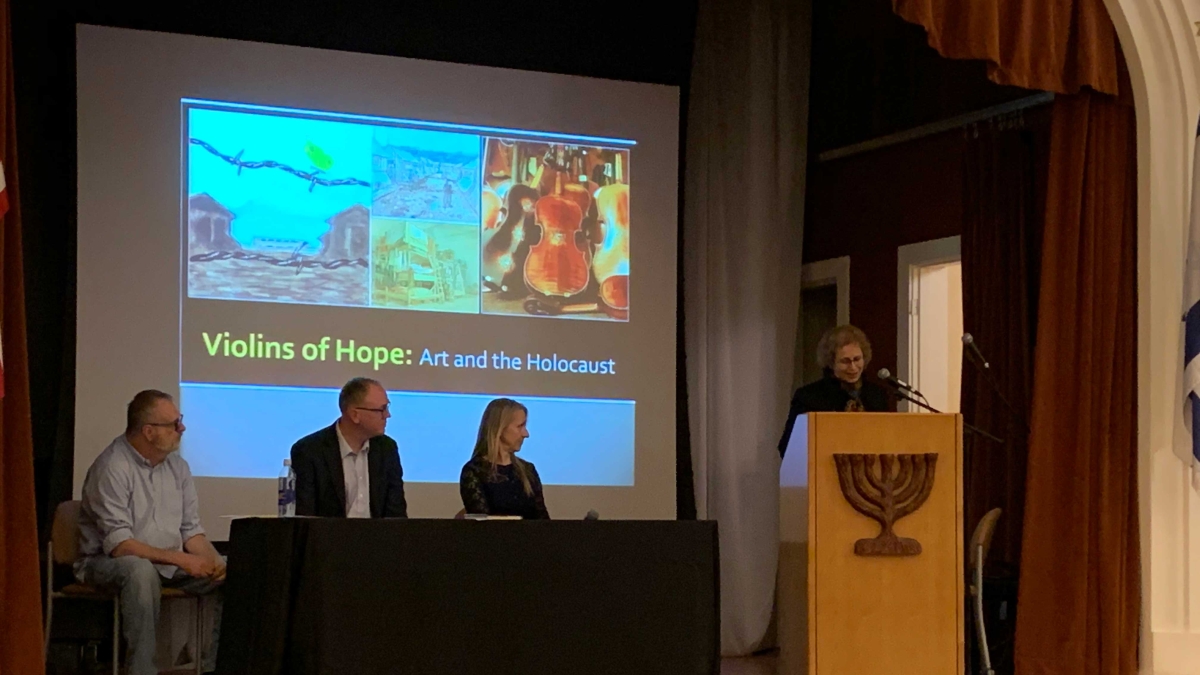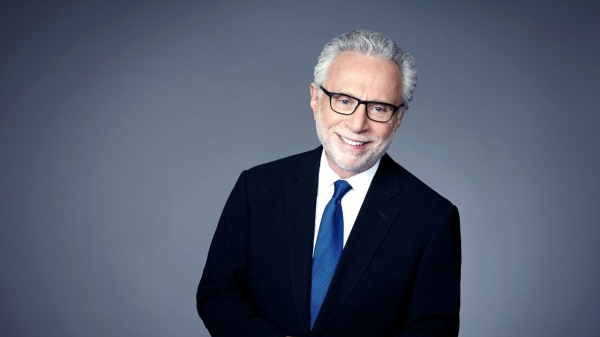'Moments of hope': ASU panel explores role of art and music during Holocaust

From left: Associate Professor of German Daniel Gilfillan, Assistant Professor of history Volker Benkert, School of Music Professor of musicology Sabine Feisst and (at lectern) Regents’ Professor and Director of Jewish Studies Hava Samuelson speak Monday about the ways art was created and consumed during the Holocaust. Photo by Emma Greguska/ASU Now
In 2002, “The Pianist” took home an Oscar for best adapted screenplay. It told the story of Jewish composer Władysław Szpilman and the music that helped carry him through the atrocities he witnessed and endured.
While Szpilman was a pianist, many Jewish musicians at that time were actually violinists. In fact, the violin has long been associated with Jewish culture, having been among the earliest pioneers of the instrument.
On Monday evening at the Arizona Jewish Historical Society in downtown Phoenix, a handful of Arizona State University professors gave presentations on “Art and the Holocaust,” exploring the ways that art — and music in particular — was created and consumed during a time of great turmoil and tragedy.
The event was part of the national traveling exhibit “Violins of Hope,” premiering in the Valley for the first time this spring, an educational community collaboration that tells the stories of the violins played by Jewish musicians during the Holocaust.
“While it was a horrific experience, there were moments of hope,” said Alison Johnston, project manager for Violins of Hope Phoenix, as she welcomed an audience of about 50 on Monday.
Johnston worked closely with ASU Regents’ Professor and Director of Jewish Studies Hava Samuelson over the course of almost two years to bring the exhibit to Phoenix. In addition to free public talks, it also includes a photography exhibition and concerts.
Johnston called it a testimony to those who died during the Holocaust and a way to ensure their stories are not lost by educating future generations.
Violins of Hope arose out of Israeli violinmaker Amnon Weinstein’s 20-year-long quest to locate and restore the violins of the Holocaust after a man who played the violin in Auschwitz visited him and asked if he would restore it for his grandson.
Later, Weinstein’s son Avshalom became involved, and the pair have now restored more than 70 violins. The instruments have been featured in books, print, film and television; they have been used in lectures and educational programs; and they have been played in concert halls and exhibited in museums throughout the world.
On Wednesday, March 13, ASU School of Music Professor of musicology Sabine Feisst will host a recital featuring lost music of the Holocaust at the Kerr Cultural Center. On Monday evening, she gave a presentation that highlighted some of the most influential Jewish musicians and composers of the Holocaust.
“Violin songs helped them tell their stories and share their feelings,” Feisst said.
But those stories and feelings weren’t always welcome. In the years before World War II, the Munich Philharmonic prided itself for having few Jews — only two, to be exact — among its ranks.
Assistant Professor of history Volker Benkert explained that the philharmonic’s rationale was that if the city of Munich was to be the capital of the Nazi movement, they were to be its orchestra. And in 1938, they performed what would be their final concert featuring their two Jewish musicians, Carl Snoeck and Josef Lengsfeld, both violinists, before expelling them from the orchestra.
Snoeck would go on to survive his time at a hard labor camp only to die shortly after in 1946, and Lengsfeld committed suicide with his wife just months after being expelled from the orchestra.
A common thread throughout the evening’s presentations was how music and art sustained Jews during the Holocaust but at the same time felt inappropriate given the circumstances.
Daniel Gilfillan, associate professor of German, pointed to German philosopher and pianist Theodor Adorno, whose oft-quoted essay “Cultural Criticism and Society” states, “To write poetry after Auschwitz is barbaric.”
Many poets took issue with Adorno’s words, and he eventually walked it back somewhat, by elaborating that no matter how much poetry and art can try to respond to something so horrific, if the culture that allowed it to happen does not change, the same barbarism will allow it to happen again.
Gilfillan cited writer and Holocaust survivor Ruth Kluger’s thoughts on the matter: “No great poetry was composed in the concentration camps. If it were not so, one might entertain the idea that the camps were good for something.”
Yet, Gilfillan said, Kluger and many other artists acknowledged the vital role of art in their ability to survive, and later to confront their experiences.
In her closing statement, Samuelson echoed that sentiment, saying, “No art is inappropriate, and all art is perhaps the only way to deal with (such things).”
More Law, journalism and politics

CNN’s Wolf Blitzer to receive 41st Walter Cronkite Award for Excellence in Journalism
Wolf Blitzer, the longtime CNN journalist and anchor of “The Situation Room With Wolf Blitzer,” will accept the 41st Walter…

Cronkite School launches Women Leaders in Sports Media live-learn program
Women in a new sports media program at Arizona State University got a solid game plan from a sports veteran at an Aug. 20 welcome…

ASU center to host the Pursuits of Education and Excellence Symposium
The Center for the Study of Race and Democracy (CSRD) at Arizona State University is introducing the Pursuits of Education and…